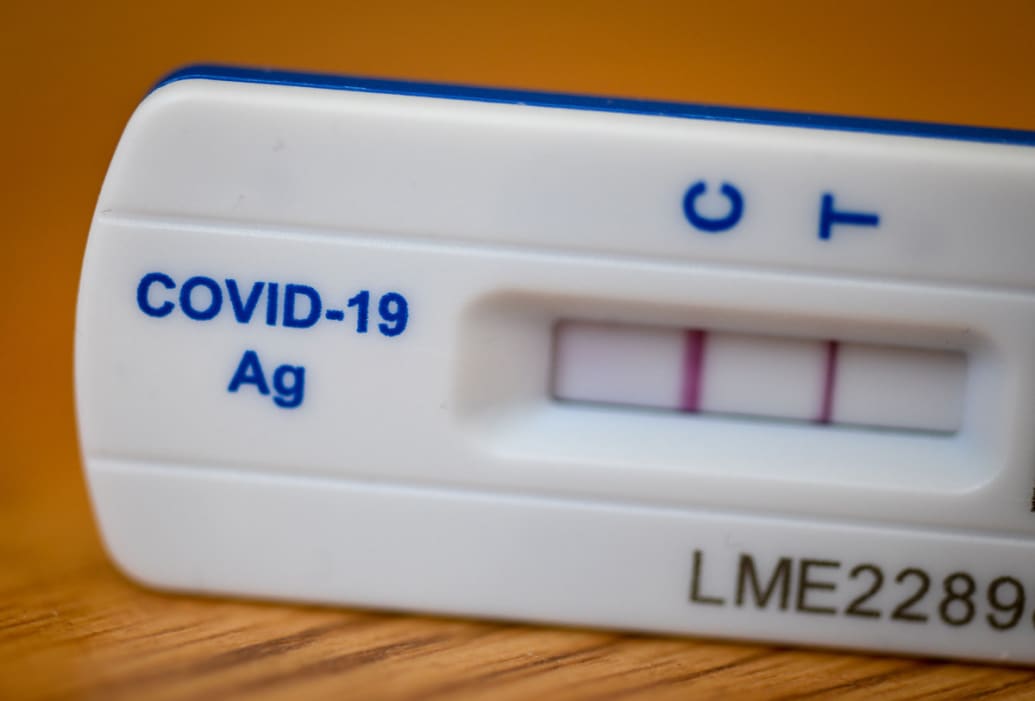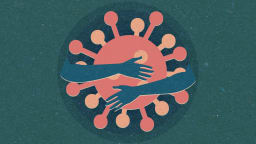As the wave of COVID infections from the highly-contagious BA.5 subvariant finally subsided in late July, new subvariants were already competing for dominance—and the opportunity to drive the next wave of infections.
A little over two months later, epidemiologists are close to naming a winner. In the United Kingdom, infections from a highly mutated subvariant called BQ.1.1 are doubling every week—a rate of growth that far exceeds other leading subvariants. In the U.S., BQ.1.1 is spreading twice as fast as its cousin subvariant BA.2.75.2.
That means BQ.1.1 is very contagious. But that’s not the subvariant’s most alarming quality. What’s most worrying is that it also evades certain antibodies. In fact, BQ.1.1 seems to be the first form of COVID against which antibody therapies—evusheld and bebtelovimab, for instance—don’t work at all.
Luckily, the best vaccines still work against BQ.1.1—especially the latest “bivalent” messenger-RNA boosters. Uptake of the new booster has been shockingly sluggish, however, meaning the new shots aren’t yet offering much protection on a population level.
We have the tools to defeat COVID. But “the reality is nobody is using the tools,” James Lawler, an infectious disease expert at the University of Nebraska Medical Center, told The Daily Beast.
Highly contagious and immune-evasive, BQ.1.1 is poised to take advantage of an increasingly vulnerable global population as antibodies from vaccinations and past infection gradually wear off in the coming months. The question isn’t whether a fresh wave of infections is coming. It’s exactly when.
“We are stepping into a very fluid phase of the pandemic right now,” Edwin Michael, an epidemiologist at the Center for Global Health Infectious Disease Research at the University of South Florida, told The Daily Beast. Michael has built sophisticated computer models for simulating the COVID pandemic.
“
BQ.1.1 or some other highly-contagious new subvariant is just waiting for our defenses to slip.
”
BQ.1.1 wasn’t the inevitable winner of the viral competition that raged, mostly unseen, in the months following the peak of the BA.5 wave. There were other highly contagious and somewhat evasive subvariants, including BA.2.75.2 and BA.4.6.1.
But BQ.1.1 had an advantage, thanks in part to an eyebrow-raising three major mutations on its spike protein, the part of the SARS-CoV-2 virus that helps it grab onto and infect our cells. These mutations—N460K, K444T, and R346T—make BQ.1.1 more contagious than its cousins.
These and other mutations also give BQ.1.1’s ability to evade antibody therapies. These therapies aren’t the only way to treat COVID, of course—there are antiviral drugs and treatments that don’t include doses of antibodies.
But antibody therapies have proved popular and effective against other variants and subvariants of SARS-CoV-2. BQ.1.1 could begin to render them obsolete, narrowing our options for preventing COVID infections from becoming COVID deaths.
One of the most important trends, as the COVID pandemic grinds toward its fourth year, has been the “decoupling” of the infection rate from the death rate. The worst day for COVID cases was Jan. 18, when 3.8 million people caught the virus.
But by then tens of millions of people were vaccinated—and hundreds of millions more had natural antibodies from past infection. At the same time, our arsenal of therapies was expanding. Which explains why the worst day for COVID deaths didn’t coincide with the worst day for infections. Instead, it occurred almost exactly a year earlier: Jan. 20, 2021, when nearly 18,000 people died.
The decoupling trend has endured. The case rate fluctuates wildly, but the death rate—despite a few bumps here and there—mostly keeps inching downward. But if BQ.1.1 drives the next COVID wave, as seems increasingly likely, it’s possible the decoupling could reverse somewhat as treatment options diminish.
Fortunately, the latest mRNA boosters from Moderna and Pfizer are still highly effective against BQ.1.1. There’s a good reason for this. Moderna and Pfizer formulated the new bivalent boosters specifically to provide immunity against BA.5. BQ.1.1 is a form of BA.5, albeit with additional mutations.
Of course, the bivalent boosters only help if you get them. And a deepening sense of complacency in many countries has translated into lower and lower vaccine uptake. “Vaccine uptake collapsed and will keep going down,” Ali Mokdad, a professor of health metrics sciences at the University of Washington Institute for Health, told The Daily Beast.
In the U.S., 80 percent of people have gotten at least one COVID shot; 67 percent completed a full course of vaccine—either two doses of mRNA or a single dose of certain other vaccines. Just 33 percent got the first round of boosters, which became available last fall. And only 10 percent got the bivalent boosters that regulators began rolling out in August.
The numbers aren’t much better in other developed countries—and far worse in developing countries. And that means the world is mostly depending on antibodies from past infection to prevent a catastrophic wave of new cases and deaths.
But natural antibodies eventually fade. “In terms of variables, the major one is the rate at which natural immunity will wane,” Michael said. It’s possible a helpful degree of immunity from past infection endures for a year or more. It’s also possible it disappears after six months or so.
Epidemiologists agree, however, that natural immunity does eventually fade away—and vaccine uptake is too low to compensate for this population-wide loss of antibodies. BQ.1.1 or some other highly-contagious new subvariant is just waiting for our defenses to slip. A new wave of infections could come as early as this winter. Or lingering antibodies could delay it. Michael said his computer models predict a surge in cases starting in April.
Sooner might actually be better for humanity. As bad as BQ.1.1 is, it’s not the last word on SARS-CoV-2’s evolution. “It has a lot of potential mutations, still,” Mokdad said of the virus. “The flu virus keeps on mutating and this one is no different.”

A positive test is seen after using COVID-19 rapid antigen test kit, showing infection with coronavirus, on October 10, 2022 in Weymouth, England.
Finnbarr Webster/Getty Images
New and potentially worse subvariants will follow BQ.1.1. Even if these new subvariants continue to evade antibody therapies, a steady rollout of new boosters would probably protect us. But we as a species just can’t be bothered to get vaccinated.
So we’re counting on catching and surviving COVID, and building up natural antibodies, in order to prevent potentially worse COVID in the future. We’re collectively walking an immunity tightrope.
It’s easy to slip and fall. If you’re not current on your boosters and your antibodies from past infection wear off before you catch COVID again, you could be in big trouble. Especially if you catch BQ.1.1 or an even more evasive subvariant. One that shrugs off some of our best drugs.
That’s the individual prognosis. The outlook for humanity as a whole is equally worrying. Lawler for one said he thinks COVID will be with us pretty much forever. Like the flu. But much worse than the flu.
Even the best-case scenario, as Lawler described it, is still grim: “I think over the next couple of years, incremental increases in vaccination and repeated COVID infections—over and over and over—may eventually give us enough population immunity that we will see less explosive outbreaks and hospitalization rates and deaths that are a bit lower,” he said. “But I doubt they will get down to seasonal influenza levels.”

